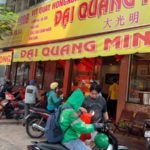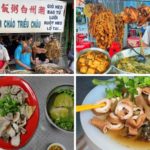Location and Historical Background
Located at 37 Bach Van Street, Ward 5, District 5, Ho Chi Minh City, Cho Hoa Binh (Hòa Bình Market) sits in the heart of a long-established Chinese community. Following the development of the Cho Lon (Chợ Lớn) area since the early 20th century, Cho Hoa Binh rapidly expanded and became one of the largest markets in the region at that time.
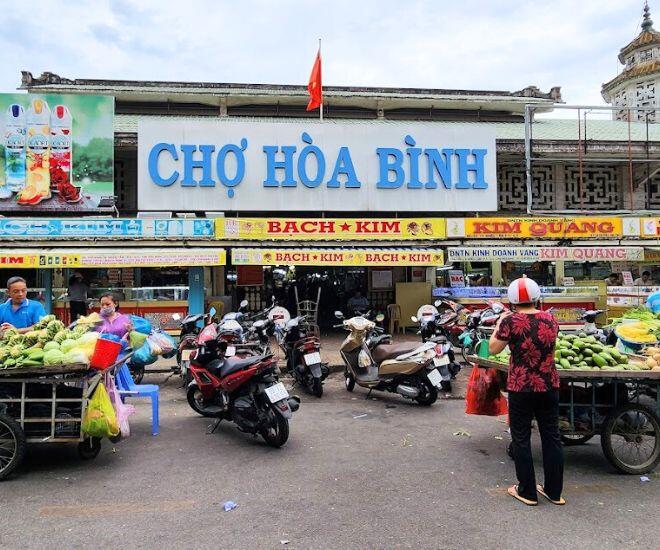
The market’s original architecture showcased a strong Chinese influence, evident in its intricately carved wooden columns and traditional curved tile roofs. Even after 1975, the market continued to thrive, gradually becoming an integral part of Saigon’s cultural heritage, especially for the Chinese community.
Today, despite undergoing various changes, Cho Hoa Binh retains its unique atmosphere, seamlessly blending traditional and modern elements. This is reflected not only in its architecture but also in the cultural practices, trading activities, and goods sold within its premises.
A Diverse and Vibrant Food Hub
One of the market’s standout features is its extensive food section. The market is divided into several smaller areas:
Fresh Produce: Shoppers can find a wide range of fresh fruits, vegetables, meat, seafood, and more, updated daily. The vendors prioritize quality and freshness, ensuring they meet the needs of their customers.
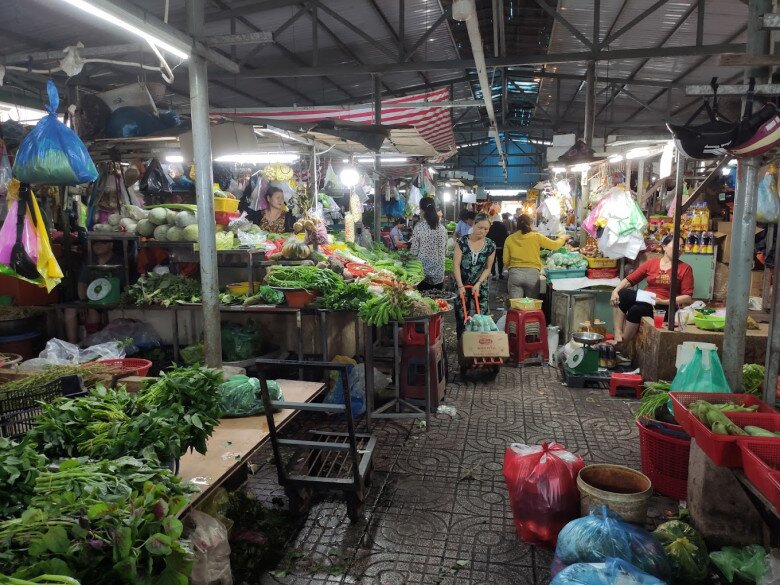
Dried Goods: An array of dried foods is a staple in the market, including stalls selling fermented fish, salt, spices, Chinese herbs, tea, candies, and dried fruits. The distinctive aromas from this section leave a lasting impression on visitors.
Chinese Specialties: This unique area attracts both locals and tourists alike. Traditional mooncakes, lap xuong (a type of Chinese sausage), preserved fruits, and dried fish are just a few of the delicacies prepared using authentic Chinese recipes, retaining their original flavors.
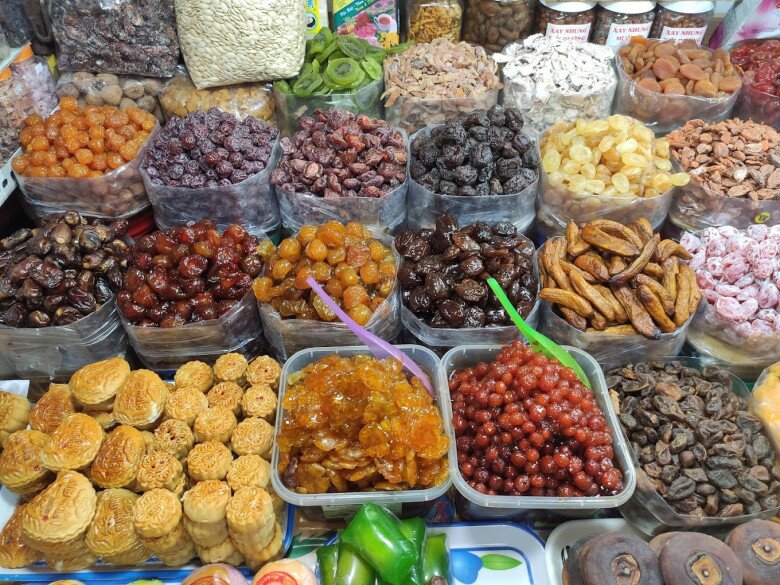
A Haven for Cultural and Spiritual Goods
Beyond its culinary offerings, Cho Hoa Binh is renowned for its religious and spiritual goods. From essential items like incense burners, offering trays, and lamps to intricate handicrafts such as Buddha statues, God of Wealth statues, religious paintings, and Feng Shui ornaments, the market caters to a range of spiritual needs.
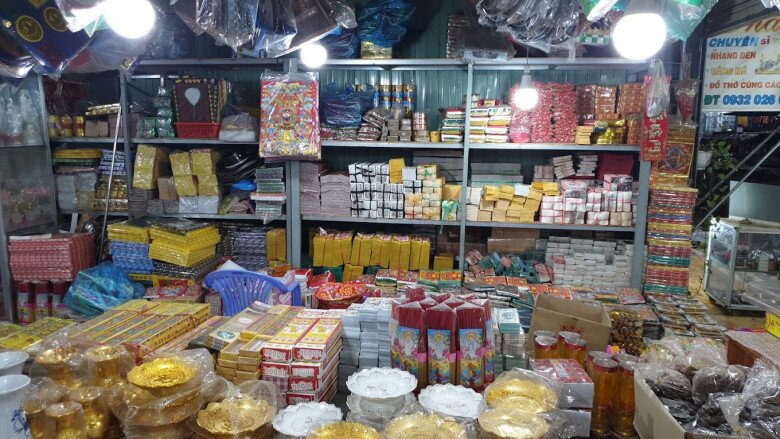
However, buyers should exercise caution when selecting these items as product quality can vary, and prices may be inflated. It is essential to research and choose reputable vendors to ensure a satisfactory purchase.
A Culinary Fusion of Chinese and Vietnamese Cuisines
The food scene at Cho Hoa Binh is a delightful fusion of Chinese and Vietnamese culinary traditions. Visitors can indulge in a variety of dishes, from Vietnamese staples like broken rice, bun bo (noodle soup with beef), pho, and banh mi to famous Chinese treats such as ha cao (shrimp dumplings), xiu mai (pork and mushroom meatballs), hu tieu mi (rice noodles with pork and mushrooms), and various types of che (sweet soups).
Notably, many of these dishes are prepared using time-honored family recipes, with some stalls having been passed down through multiple generations. The food is not only delicious but also reasonably priced, catering to locals and foreign tourists alike.

Some of the must-try dishes include:
– Hu tieu mi suon: Chewy rice noodles served in a sweet broth with tender stewed pork ribs.
– Xiu mai: Juicy meatballs with a perfect blend of pork and shiitake mushrooms.
– Ha cao and sui cao: Delicate dumplings with a thin wrapper, filled with a generous portion of shrimp and pork, served steamed.
– Che Hoa: A variety of sweet soups, including mung bean, floating rice balls, ginkgo nut, and snow ear, provide a refreshing treat, perfect for Saigon’s warm climate.
Tips for Visiting Cho Hoa Binh
To make the most of your visit to Cho Hoa Binh, keep these tips in mind:
– Best Time to Go: Morning or evening is ideal, as the market is bustling with activity, and you’ll find an array of hot, freshly prepared dishes.
– Ask for Prices: To avoid being overcharged, especially if you’re unfamiliar with traditional market pricing, don’t hesitate to inquire about prices before making a purchase.
– Choose Reputable Stalls: This is especially important when purchasing spiritual items or ready-to-eat food.
– Bring Cash: Most vendors do not accept electronic payments, so it’s best to have cash on hand.
– Bargain Gently: Haggling is a common and enjoyable part of the market experience in Vietnam, so don’t be afraid to negotiate gently.
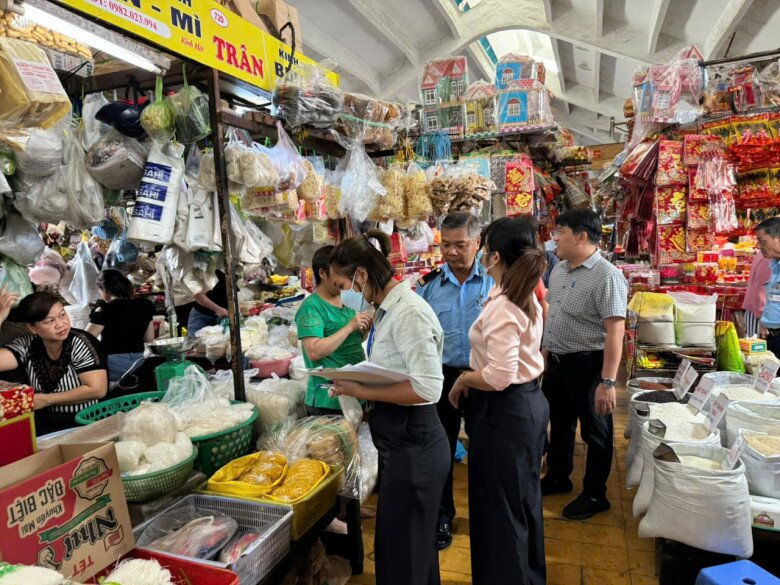
Amid rapid urbanization and the rise of modern shopping malls, Cho Hoa Binh remains a cultural anchor for the Chinese community in Ho Chi Minh City. More than just a marketplace, it is a guardian of cultural heritage. The market’s continued existence not only holds economic significance but also contributes to preserving the rich history and culture of the city. For those intrigued by cultural exploration, a visit to Cho Hoa Binh is a must when in Saigon.
Taste Bud Twister: Exploring the Unique Flavors of Chaozhou-Style Family Meals in Cho Lon District
If you’re craving Chinese food, we’ve got just the spot for you. Indulge in the delicious and renowned Teochew cuisine at Hong Bang Teochew Porridge. This restaurant specializes in a unique blend of flavors and offers a dining experience that will tantalize your taste buds. With every bite, you’ll be transported to the vibrant culture and heritage of the Teochew region.

























